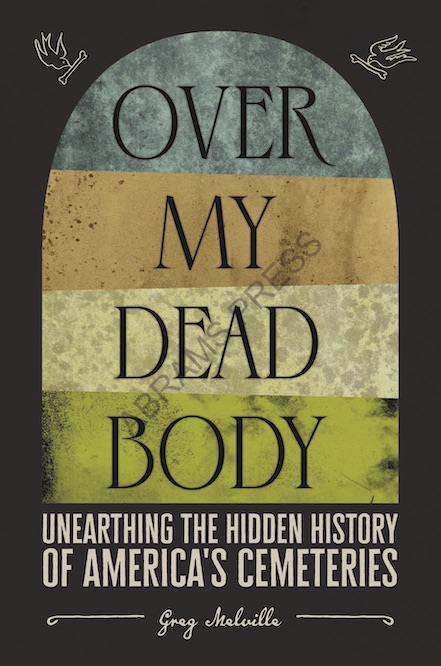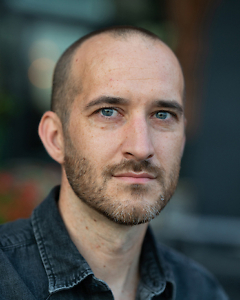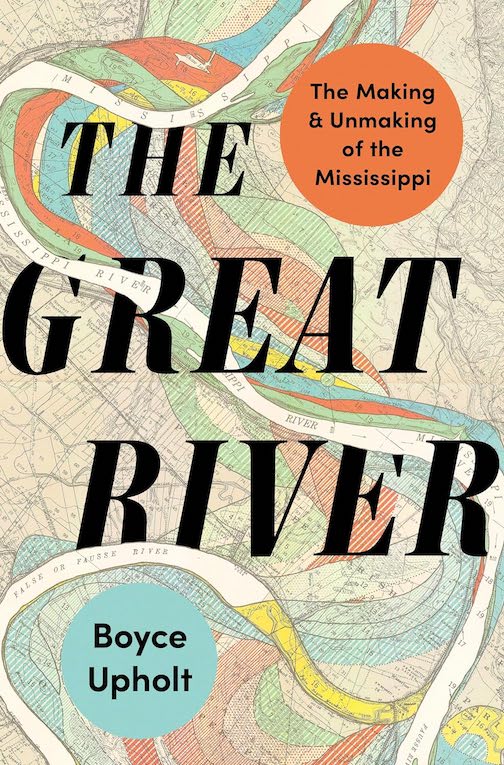Creating the Playground
Michael Martone talks about ruined cities, rewired culture, and collapsing categories
Michael Martone has been aptly described as a writer with “a deep affection for the ordinary,” though things have a way of becoming distinctly less ordinary in the playful realm of his imagination. He turned his home state into a surreal version of itself in his fantasy travel book, The Blue Guide to Indiana (2001), and transformed the lowly contributor’s note into art with Michael Martone (2005). He has a gift for re-conceiving the utterly familiar, and his 2008 collection of not-quite-nonfiction essays, Racing in Place, finds the wonder in—among other things—eyeglasses, a golf course, and the Iowa State team mascot.
Martone, who is a professor of English and director of the creative-writing program at the University of Alabama, will give a reading at Austin Peay State University in Clarksville on March 31. He answered questions from Chapter 16 via email in anticipation of his visit to Tennessee.
Chapter 16: You still write about the Midwest as a distinct, if difficult to define, region—but is it really still distinct? Most native Southerners feel that the South’s uniqueness is disappearing. Is the same true of the Midwest?
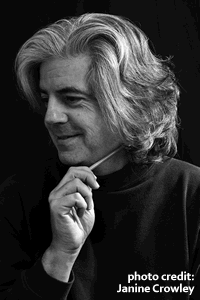 Martone: Well, it is the case that “The South” did, in many ways, win the Civil War culturally what with a Cracker Barrel on every corner and “country” music stations more and more crowding the dial. I think both the South and the Midwest are less distinct than they were. That is to say they are less distinct in the way we are used to thinking of “The South” and “The Midwest.” Those old regional markers have been homogenized for sure by mass culture and deconstructing media.
Martone: Well, it is the case that “The South” did, in many ways, win the Civil War culturally what with a Cracker Barrel on every corner and “country” music stations more and more crowding the dial. I think both the South and the Midwest are less distinct than they were. That is to say they are less distinct in the way we are used to thinking of “The South” and “The Midwest.” Those old regional markers have been homogenized for sure by mass culture and deconstructing media.
But I think new markers have replaced the old and contribute to our sense of place now and in ways we haven’t quite processed yet. Take Cleveland, for example. I just got back from a weeklong visit to that great Midwestern city. True, plenty of Kentucky Fried Chicken joints and Cracker Barrel, and the Rock and Roll Hall of Fame have completely domesticated that music into a set of clichés. And yes, too, there are some remnants of the previous distinct place—piroges for instance—that are held over from a regional past we recognize. But all the famous local downtown department stores are gone, replaced by the surviving Macy’s in suburban malls. The suburb now is a place that is not a traditional region but a place nevertheless.
But back to Cleveland. It now feels Midwestern in a whole new way. The Midwestern city is a ruined city. Detroit, Cleveland, Fort Wayne, and the Midwestern-ness of them long gone with the Midwestern kids who fled from there. This ruination seems unique to the region, though the extent and shape of the region itself may be shifting. In this sense Buffalo seems Midwestern when Indianapolis and Minneapolis don’t so much. The South may have lost its Southern uniqueness but what has replaced it is the unique feel of the “New” South.
Chapter 16: You have a fascination with physical places both real and fictional. Is the importance of place diminishing as people spend more of their lives in virtual spaces? How is technology affecting our geographic imagination?
Martone: I think, to be fair, I have a fascination with Place—with the capital P—real or not. For me even a “real” place is constructed and therefore virtually interesting. You have got to read River of Shadows by Rebecca Solnit who posits 1872—the year Eadweard Muybridge did the first of his motion studies—as the fulcrum to what she calls the annihilation of space and time. I think our ability to represent reality has become so good that we are on the edge of replacing reality with representations of reality. I also believe that some of us, those of us who are older, may mourn that passing. But it needs to be seen, the passing “reality,” for what it was—a synthetic construction composed by a less complex media.
My concern is that the media is evolving so fast that it is impossible to absorb it, to naturalize it. I don’t have a hand-held device yet. Can I muster the energy for its assimilation? So far, the greater culture seems to be doing it, seems to be rewiring itself in ever shrinking intervals of time, keeping up with the keeping up. Is there a biological limit? I don’t know. And then again the step after this, and it isn’t that far off, of course, is to rewire the biology itself. It is funny that science fiction poses the idea of the war between the robots and the humans. I don’t think that is what’s happening, will happen. In this interview, I am not speaking to you. You are in Tennessee miles away. I am communing with a machine. Both of us are already cybernetic. The place we have met is this place.
Chapter 16: Your stories don’t utilize realistic narratives with plots, fleshed-out characters, etc., but those conventions are still very dominant in our books and films. Do you find yourself slipping into them in spite of yourself? Do you have to discipline yourself to stay away from them when you’re writing?
Martone: I think I am pretty realistic most of the time. I am not an irrealist. I don’t write fairy tales or magical realism or surrealism. I just don’t tell stories often. It is true that most books, movies, etc., seem to be narrative but I would contend that maybe half of those stories are being told in a realistic manner. Vampires, anyone? In fact I think it is pretty easy to be a realistic fiction maker like me who is a non-narrativist. Often they are thought of as poets. I do a lot of what is done in lyric poetry but I do it in prose. As a formalist, I certainly understand what narrative realism does and how it works. And sometimes I will do it. But I like feeling that I don’t have to do it. I like being able to be realistic and nonrealistic, narrative or not. I like making things and, mostly, confounding categories when and where I find them.
Chapter 16: Much of your writing features slippery identities and a blurred line between fiction and fact. Do you think of yourself as engaged in a game with readers? What’s your relationship to your audience?
Martone: Game, no, not so much as “play.” I like to think that I am creating play, a very adult kind of play. Or maybe more precisely a playground. I like to create interesting (I hope), entertaining, amusing, instructive playgrounds that the audience, the reader, helps to construct. Often I use collage, and collage, with all its white space, invites the reader, I think, to make his or her own meaning. I guess I am just not as involved in making meaning mean as some writers are. Not mine to make. My relationship with the audience then? An arranger like in music, not a composer. A fabricator of stuff.
Chapter 16: The publishing industry likes to divvy up writing into clearly labeled genres, and your work pretty much defies any such labeling. Do you concern yourself with the marketplace when you are writing? What do you tell your students about the commercial question?
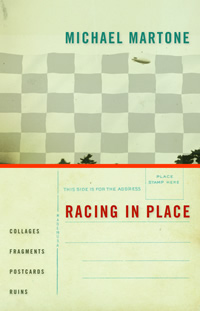 Martone: I tell them that the commercial is a category, a genre too, and either you get to know the rules of such categories and prosper by that, or take pleasure in, as you say, “defying” of them—not so much defy but again play with them, have fun with them. I think to do that is in service to the audience because it allows the audience to act creatively, to think outside the boxes we all are in. A work of art is valuable because it opens up a space for wonder, allows for a moment, a fresh way of seeing, feeling, thinking that the reader can take back into the fixed categories of reality he or she returns to after he or she has experienced the art. I believe this is valuable work. It just is often not commercial.
Martone: I tell them that the commercial is a category, a genre too, and either you get to know the rules of such categories and prosper by that, or take pleasure in, as you say, “defying” of them—not so much defy but again play with them, have fun with them. I think to do that is in service to the audience because it allows the audience to act creatively, to think outside the boxes we all are in. A work of art is valuable because it opens up a space for wonder, allows for a moment, a fresh way of seeing, feeling, thinking that the reader can take back into the fixed categories of reality he or she returns to after he or she has experienced the art. I believe this is valuable work. It just is often not commercial.
Chapter 16: Speaking of labels, is “formalist” a label you’d apply to yourself?
Martone: I did in an answer above. By that I mean I understand and I am interested in the various forms prose can take on and am curious too about how different forms are used by artists and readers.
Chapter 16: What do you think about the growth in M.F.A. programs in creative writing? Have they reached a point of diminishing returns?
Martone: Wow! Diminishing returns. Now that sounds commercial. To answer the first part of the question—I think programs haven’t grown enough. No, that’s not right. I am ambivalent about programs. What I mean is there are never too many writers. It is a good thing when everyone is writing. The “return” on that investment is always increasing. There is profit in it. What do you think about the number of people running marathons? Has marathon running reached a point of diminishing returns? Your question implies that too many people might be writing, yes? And that the return that is diminishing is that only writers who write good things should be writing, right? So what you are saying is that only the sub-five-minute-mile Africans should be running the marathons? Writing is a good thing. My feelings about M.F.A. programs are that they often feel that writing should only be something “good” writers can do. My feeling is that everyone should have a chance to come to writing school and write whatever. I wish I could make that happen. We are diminished when we believe that writing is something special only specialists can do, should do, get to do.
Chapter 16: What excites and engages you in the world of writing these days? Where do you see the future taking shape?
Martone: See above. What excites me—though tasks me—is the number of people who have access to words and to their making. I am very happy that I am typing this on an amazingly powerful typesetting machine and that this machine hooked up to the Internet is deconstructing the author faster than you can say Roland Barthes. We are living in a time when the categories of author, audience, reader, editor, publisher are all collapsing. All are being rewritten right before our eyes.
Michael Martone will read from his latest collection, Racing in Place: Collages, Fragments, Postcards, and Ruins, on March 31 in Morgan University Center, Room 303, at 8 p.m. on the Austin Peay State University campus.

